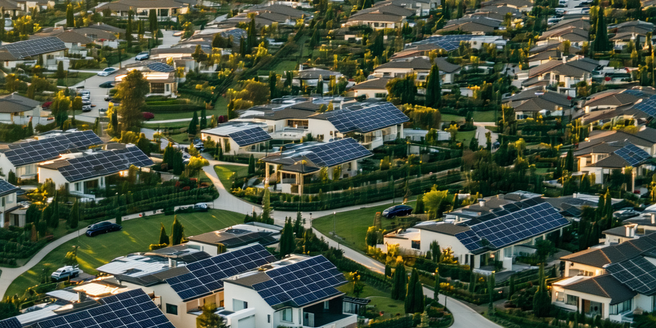Inexpensive Real Estate Trends

Suburban Growth and Affordable Housing
The trend of urban exodus has led to significant growth in suburban areas. With urban centers becoming increasingly expensive, many are moving to the suburbs where housing is more affordable. This shift has prompted a surge in the development of affordable housing projects in these regions. Local governments are working with developers to create housing solutions that are both cost-effective and sustainable. Incentives such as tax breaks and relaxed zoning laws are being implemented to encourage development. These affordable housing projects not only provide homes but also improve infrastructure, enhancing the quality of life for residents. This movement has made suburban areas more appealing to a wider demographic, including young families and professionals seeking a better balance between work and life. As these developments continue, they reshape the real estate landscape, offering new opportunities for homebuyers.
The Rise of Remote Work and Its Impact on Housing Prices
The surge in remote work has significantly impacted housing prices nationwide. With many companies adopting flexible work policies, employees are no longer bound to living in high-cost metropolitan areas. This shift has led to a redistribution of housing demand, causing prices to stabilize in urban centers while driving growth in suburbs and rural regions. Remote workers are now seeking homes with dedicated office spaces and larger living areas, prioritizing comfort over proximity to work. Real estate markets in traditionally less populated areas have experienced unprecedented activity, pushing up prices as demand outstrips supply. This trend is also leading to a rise in co-working spaces within residential complexes, catering to the needs of remote professionals. As the remote work culture continues to evolve, it reshapes housing preferences, affecting market dynamics and creating new opportunities for real estate investors.
Tiny Homes: A Budget-Friendly Alternative
Tiny homes are gaining popularity as a cost-effective housing solution amidst soaring real estate prices. These compact dwellings offer a minimalist lifestyle, allowing homeowners to reduce living expenses significantly. With an emphasis on sustainability and efficient use of space, tiny homes are designed to be environmentally friendly and financially accessible. Many individuals and families are drawn to the idea of downsizing, leading to a simpler and more sustainable way of living. Tiny home communities are emerging, offering shared amenities and fostering a sense of community among residents. The flexibility of tiny homes allows for greater mobility, with options for trailers or stationary builds. This trend challenges traditional real estate norms, presenting an appealing alternative for those seeking budget-friendly housing solutions without compromising on quality or style. As more people embrace this lifestyle, tiny homes continue to alter the real estate landscape.
Revitalizing Urban Areas on a Budget
Revitalizing urban areas can be achieved without exorbitant costs through smart urban planning and community engagement. By focusing on adaptive reuse of existing structures, cities can save on resources and reduce environmental impact. Initiatives like converting old warehouses into mixed-use developments or turning underutilized areas into green spaces contribute to community revitalization. Engaging local communities in the planning process ensures developments meet residents’ needs and enhance the area’s livability. Public-private partnerships can alleviate financial burdens, with private investments supplemented by government grants or subsidies. Using cost-effective materials and sustainable building practices further reduces costs while promoting environmental stewardship. These efforts not only rejuvenate neglected urban areas but also attract new businesses and residents, fostering economic growth. By prioritizing affordability and sustainability, cities can transform urban landscapes in a way that benefits all stakeholders.
Innovative Building Materials Reducing Costs
The use of innovative building materials plays a crucial role in reducing construction costs, making housing more affordable. Innovations such as prefabricated panels, 3D-printed structures, and recycled materials are revolutionizing the construction industry. Prefabrication allows for efficient and quick assembly, reducing labor costs and construction time. 3D printing technology offers the potential for customized designs at a fraction of the cost of traditional methods. Recycled materials not only minimize environmental impact but also lower expenses by reducing reliance on new resources. These innovations contribute to cost savings in both residential and commercial projects, enabling developers to offer affordable housing options. Embracing these materials necessitates a shift in conventional construction practices, encouraging collaboration between builders, architects, and manufacturers. As these technologies advance, they will continue to drive down costs, making high-quality housing more accessible to a broader population.
Government Incentives for First-Time Homebuyers
Government incentives play a vital role in supporting first-time homebuyers, making homeownership more attainable. Programs such as tax credits, down payment assistance, and reduced interest rates are designed to ease the financial burden on new buyers. These incentives often target low to moderate-income individuals, enabling them to enter the housing market with greater financial security. Additionally, educational programs help first-time buyers navigate the complex home buying process, empowering them to make informed decisions. By partnering with financial institutions, governments can offer favorable loan terms that encourage homeownership. These initiatives not only benefit individual buyers but also stimulate the real estate market by increasing demand. As governments continue to recognize the importance of affordable housing, ongoing support for first-time homebuyers remains essential in fostering economic stability and community development.